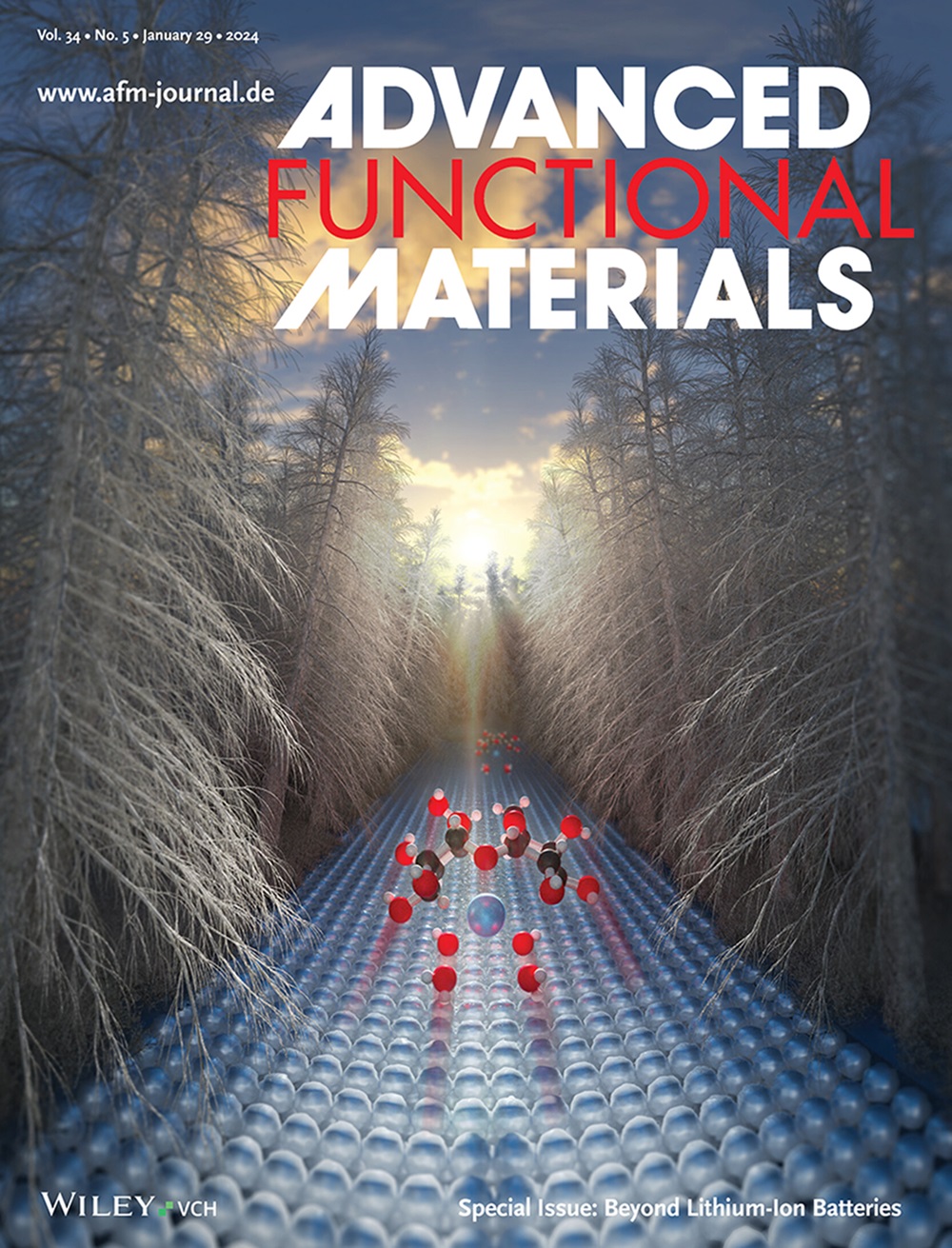Low‐Dielectric and Submicron‐Resolution Photosensitive Polyimide Substrate for Large‐Scale Pattern Customization and Low‐Signal‐Loss Transmission with Nanotesla‐Scale Quantum Sensing Potential
IF 19
1区 材料科学
Q1 CHEMISTRY, MULTIDISCIPLINARY
引用次数: 0
Abstract
Photosensitive polyimide (PSPI) integrates photoresist and dielectric interlayer functions for efficient electronic fabrication, yet suffers from limited resolution and elevated dielectric constants, particularly in advanced integrated circuits (ICs). In this study, through integrated molecular design and component screening, a novel PSPI system incorporating intrinsically low‐polarization photosensitive groups and efficient chemical amplification is found to exhibit low dielectric properties (ɛ = 2.241, tanδ = 0.0137 at 10 GHz), submicron‐level resolution (≈880 nm), low thermal imidization temperature (180°C), and low coefficient of thermal expansion (26 ppm K低介电和亚微米分辨率光敏聚酰亚胺衬底用于大规模图案定制和具有纳米特斯拉级量子传感电位的低信号损耗传输
光敏聚酰亚胺(PSPI)集成了光刻胶和介电夹层功能,用于高效的电子制造,但其分辨率有限,介电常数升高,特别是在先进的集成电路(ic)中。在这项研究中,通过集成的分子设计和组分筛选,发现了一种新型的PSPI系统,该系统结合了本质上低偏振光敏基团和高效的化学放大,具有低介电性能(在10 GHz时,λ = 2.241, tanδ = 0.0137),亚微米级分辨率(≈880 nm),低热亚酰化温度(180°C)和低热膨胀系数(26 ppm K−1)。该PSPI系统与现代IC制造工艺完全兼容,其优越的光敏性(33.15 mJ cm⁻2)和高对比度(3.03)进一步支持激光直写。此外,作为柔性多层电路中的封装材料和介电中间层,PSPI系统具有强大的弯曲耐久性,并以最小的寄生电容增强了高频信号的完整性。结合纳米金刚石氮空位中心,基于低介电PSPI的电路板显著改善了量子传感和成像,提供更高的信号保真度,并在弱磁场中实现精确的纳米特斯拉级测量。这一突破将PSPI的分辨率提升到前所未有的纳米尺度,同时保持卓越的介电性能,使其成为需要精确信号传输的下一代灵活集成系统的关键推动者。
本文章由计算机程序翻译,如有差异,请以英文原文为准。
求助全文
约1分钟内获得全文
求助全文
来源期刊

Advanced Functional Materials
工程技术-材料科学:综合
CiteScore
29.50
自引率
4.20%
发文量
2086
审稿时长
2.1 months
期刊介绍:
Firmly established as a top-tier materials science journal, Advanced Functional Materials reports breakthrough research in all aspects of materials science, including nanotechnology, chemistry, physics, and biology every week.
Advanced Functional Materials is known for its rapid and fair peer review, quality content, and high impact, making it the first choice of the international materials science community.
 求助内容:
求助内容: 应助结果提醒方式:
应助结果提醒方式:


